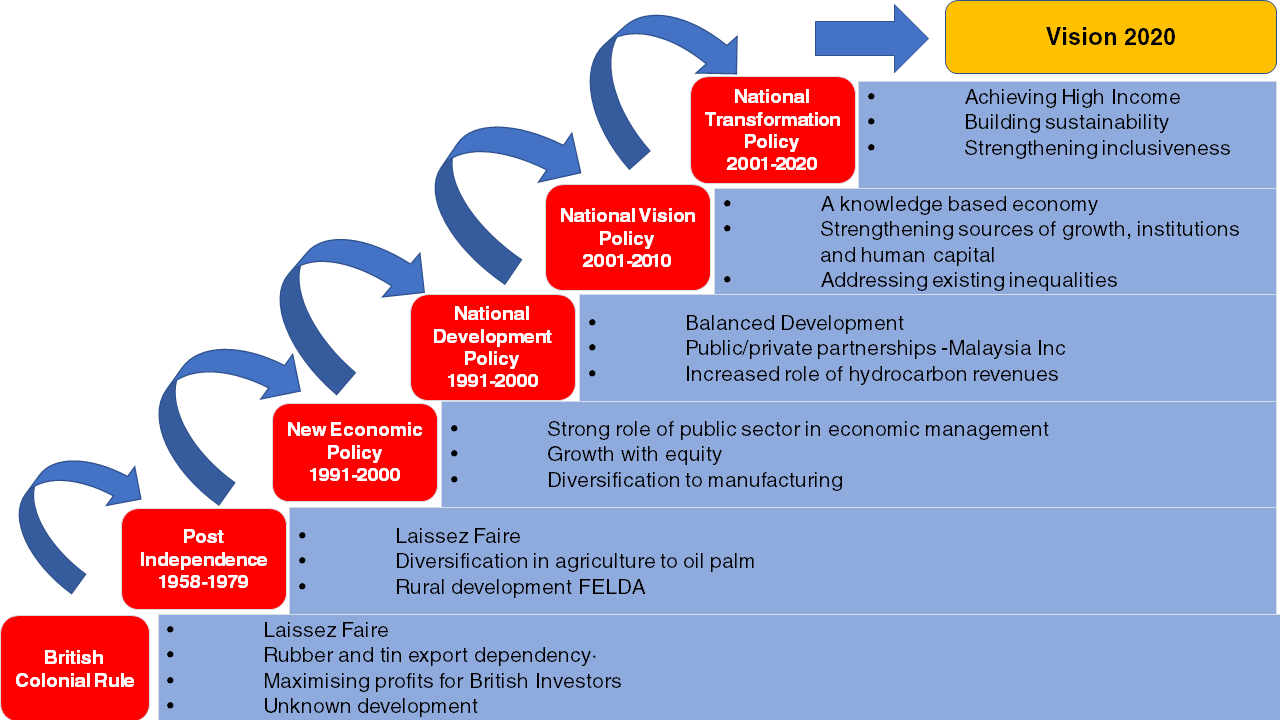When the Federation of Malaya achieved Independence on 31 August 1957, and later formed Malaysia with Sabah and Sarawak in 1963, most of the country’s population still lived in poverty.
Up to 70 percent of the young nation’s capital was owned by foreigners, and the economy was largely dependent on exports, specifically rubber and tin.
With little to no downstream manufacturing done locally, the economy’s foundation rested on raw material extraction. Thus, the higher profits from manufactured products made of rubber and tin were realised by other economies, such as Great Britain.
Furthermore, the overdependence on only two commodities created a highly volatile economic landscape, vulnerable to global supply and price fluctuations.
“The volatility in pre-war colonial Malaya, both in frequency and magnitude of shocks, is probably without modern precedent,” Sultan Nazrin Shah, who holds a doctorate from Harvard University, writes in his highly detailed book, Charting the Economy.
Despite this, rubber and tin were extremely lucrative, but only for the select few.
“By 1919, Malayan rubber exports and tin production accounted for over half of world rubber exports and half of the world output respectively,” economist Muhammad Abdul Khalid writes in The Colour of Inequality.
Unfortunately, as a British colony, the benefits did not accrue to the local population, and the lion’s share of profits was not reinvested in the local economy.
“British Malaya was the world’s largest rubber producer and the Empire’s single largest hard currency earner,” Muhammad Abdul Khalid adds. “Most of the rubber and tin earnings were repatriated to London.”
Any infrastructure investments that did make its way to Malaya or Borneo were mostly focused on colonial interests, rather than local welfare.
The GDP per capita on the eve of Independence was RM816, but it was even lower for the vast majority of Malaysians, due to the extreme inequality largely in favour of foreign, mostly European, business ownership.
The result was widespread poverty, rampant unemployment, low education rates and poor health outcomes among the predominantly rural local population.
Independence brings development
With the creation of a Malaysian nation and an independent administration, the country witnessed a dramatic rise in government expenditure for infrastructure, rural development, educational initiatives, industrialisation and economic diversification that has led to accelerated growth in employment creation, productivity, income levels and educational attainment.
The country’s performance was so dramatic in the late 1980s and 1990s, when the economy grew more than 9 percent annually for nine straight years, that Malaysia was named an “Asian Tiger”.
“Malaysia’s economic progress since World War II has been the best in Southeast Asia among those countries with significant rural populations,” Harvard economist C. Peter Timmer has noted.

*Source: Charting the Economy: Early 20th Century Malaya and Contemporary Malaysian Contrasts, Sultan Nazrin Shah (2017)
Unemployment has dropped to around 3.3 percent, and dependence on agriculture has been lessened. The larger share of the economy is now in manufacturing and services, including financial services, with Kuala Lumpur now one of the top Islamic finance capitals of the world.
During the colonial period, even when GDP did grow during periods of economic stability, the standard of living for the vast majority did not keep pace, due to the stark social imbalances, extreme inequality of income and capital ownership as well as dependence on a narrow selection of commodity exports.
The benefits of economic growth after Independence was shared more equally, as real GDP growth in the post-Independence period led to rapid advances in the average standard of living and to reductions in absolute poverty.
As of 2018, Malaysia has posted a GDP per capita of RM44,679. Absolute poverty dropped to 15 percent in 1990, and has been tracking lower since.
The Malaysian economy has also become one of the most stable in the region, overcoming the marked volatility of the colonial period. The World Economic Forum (WEF) named Malaysia first in its Macroeconomic Stability Index for ASEAN countries in 2018.
“The stability of the macroeconomic environment is important for business and therefore is significant for the overall competitiveness of a country,” the WEF report noted.
Despite a global downturn, the second quarter of 2019 has seen the Malaysian economy expand by 4.9 percent year-on-year from 4.5 percent in the previous quarter, beating market expectations of 4.7 percent as compiled by Bloomberg.
"Malaysia is one of the few economies in the region that experienced faster growth in the second quarter compared to the previous quarter," said Finance Minister Lim Guan Eng in a statement on 17 August.
Education infrastructure vital
“Well-executed and well-resourced programmes have in turn helped to transform Malaysia’s economic and social development standing,” Sultan Nazrin writes.
Education has been a policy focus since Independence with impressive results, powering economic growth and prosperity for Malaysians. Literacy rates are now close to 100 percent, and more than 80 percent of Malaysians have a secondary school education or better.
The country now boasts 20 public universities and 44 private universities.
“Because our national schools are highly affordable and heavily subsidised by the government, access to education has led to Malaysia having one of the highest literacy rates in the world,” Dr. David Yoong at University of Malaya said.
“Some of our universities have been acknowledged as world-class institutions of higher learning. For instance, the University of Malaya is ranked 70 in the world according to the QS ranking,” he added.
Today, students from all around the world come to Malaysia to access the top-notch education on offer, with the tertiary education sector becoming one of the most lucrative for the country.







